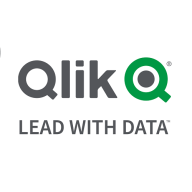


Find out what your peers are saying about Microsoft, Salesforce, Amazon Web Services (AWS) and others in BI (Business Intelligence) Tools.
In a world surrounded by data, tools that allow navigation of large data volumes ensure decisions are data-driven.
Power BI is easy to deploy within an hour, providing robust security against data leaks.
In my organization, we moved from OBI to Qlik Sense due to limitations with OBI, resulting in very high ROI.
While they eventually provide the correct answers, their support for smaller customers could be improved.
The significant drawback I notice is that Microsoft's size makes it hard to get specific change requests addressed unless they involve a bug.
We have a partnership with Microsoft, involving multiple weekly calls with dedicated personnel to ensure our satisfaction.
The support is good because there is also a community available.
While tech support is comprehensive, the stability of Qlik Sense means I generally do not need it.
Technical support requires improvement.
In Turkey, the consultant firms are very professional, and they support you.
Sigma, which is written for Snowflake, scales more easily than Domo.
You expect only a small percentage of users concurrently, but beyond a thousand concurrent users, it becomes difficult to manage.
With increasing AI capabilities, architectural developments within Microsoft, and tools like Fabric, I expect Power BI to scale accordingly.
As more data is processed, performance issues may arise.
It performs well in terms of performance and load compared to others.
I believe it is easily scalable.
In terms of stability, there's no data loss or leakage, and precautions are well-managed by Microsoft.
We typically do not have problems with end-user tools like Excel and Power BI.
It is very stable for small data, but with big data, there are performance challenges.
The stability is very good.
End users require a license to run their own reports and dashboards, which are fairly expensive.
This makes Power BI difficult to manage as loading times can reach one or two minutes, which is problematic today.
Access was more logical in how it distinguished between data and its formatting.
Microsoft updates Power BI monthly based on user community feedback.
Power BI has better visualizations and interactions with updates in 2023 that provide ease of use.
Providing an API feature to access data from the dashboard or QEDs could be beneficial.
Maybe more AI or real-time analytics could be incorporated.
Domo is expensive compared to other solutions.
I found the setup cost to be expensive
Power BI isn't very cheap, however, it is economical compared to other solutions available.
The pricing for Microsoft Power BI is low, which is a good selling point.
Compared to Power BI, it is definitely costly.
Among the BI tools and data analytics tools, Qlik is the most expensive.
For small or large organizations needing many or few licenses, pricing varies.
I have been using it for four years and have been able to extract the information I need from it.
In today's data-driven environment, these tools are of substantial value, particularly for large enterprises with numerous processes that require extensive data analysis.
Within the organization, Microsoft Power BI is used to create dashboards and gain insights into data, enhancing data-driven decision-making.
The solution makes it easy for me to develop reports and publish them.
From an end-user perspective, it's convenient and performance-oriented, providing something meaningful from all the organization's data.
It is a single product that I can use as an ETL database, BI, and more.
It has an interactive interface with Qlik graphs, pivot, and interactivity, which makes it easier to use than other tools.



Domo is a cloud-based, mobile-first BI platform that helps companies drive more value from their data by helping organizations better integrate, interpret and use data to drive timely decision making and action across the business. The Domo platform enhances existing data warehouse and BI tools and allows users to build custom apps, automate data pipelines, and make data science accessible for anyone through automated insights that can be shared with internal or external stakeholders.
Find more information on The Business Cloud Here.
Microsoft Power BI is a powerful tool for data analysis and visualization. This tool stands out for its ability to merge and analyze data from various sources. Widely adopted across different industries and departments, Power BI is instrumental in creating visually appealing dashboards and generating insightful business intelligence reports. Its intuitive interface, robust visualization capabilities, and seamless integration with other Microsoft applications empower users to easily create interactive reports and gain valuable insights.
Qlik Sense is a visual analytics and business intelligence (BI) platform that gives users full control over their system’s data. From this platform they can control every aspect of their system data. It maximizes an organization’s ability to make decisions driven by their data.
Benefits of Qlik Sense
Some of the benefits of using Qlik Sense include:
Reviews from Real Users
Qlik Sense stands out among its competitors for a number of reasons. Two major ones are its associative analytics technology and its remote access capability. Qlik Sense employs an associative analytics engine that gives users the ability to take their data analytics to the next level. Users can create visual connections between different datasets spread across their network, creating deep insights that enable users to gain a full understanding of their data. This engine is easily scaled up to allow a large number of users to benefit from the deep insights that it provides. Users can access Qlik Sense from anywhere in the world. Qlik Sense has an online portal that can be used consistently from anywhere at all. Having the ability to remotely analyze data gives users flexibility when it comes to choosing how to deploy their manpower.
Jarno L., the managing director of B2IT, writes, “The associative technology features are the solution's most valuable aspects. Qlik was the first company to implement an in-memory associative analytics engine. This basically means that all data is loaded into memory, but it also means that instead of joining data together, the data is associated together. From the front end, from the user interface point of view, data can be joined or included or excluded on the fly. It can be drilled down and drilled through and users can slice and dice it and that type of thing can be done from anywhere in the data to any other place in the data. It doesn't have to be predefined. It doesn't have to have hierarchies or anything like that.”
Tami S., the senior business intelligence analyst at the La Jolla Group, writes, “With the changing business landscape, it is nice to access Qlik Sense through an external website. As an organization when we use QlikView Desktop, we need to connect to our internal network. We can access QlikView through the QlikView access point but the website has a little different look and feel than the desktop application. We appreciate that Qlik Sense is browser-based and the user experience is the same whether at home, in the office or on a boat. As long as the user has internet access, performance is the same.”